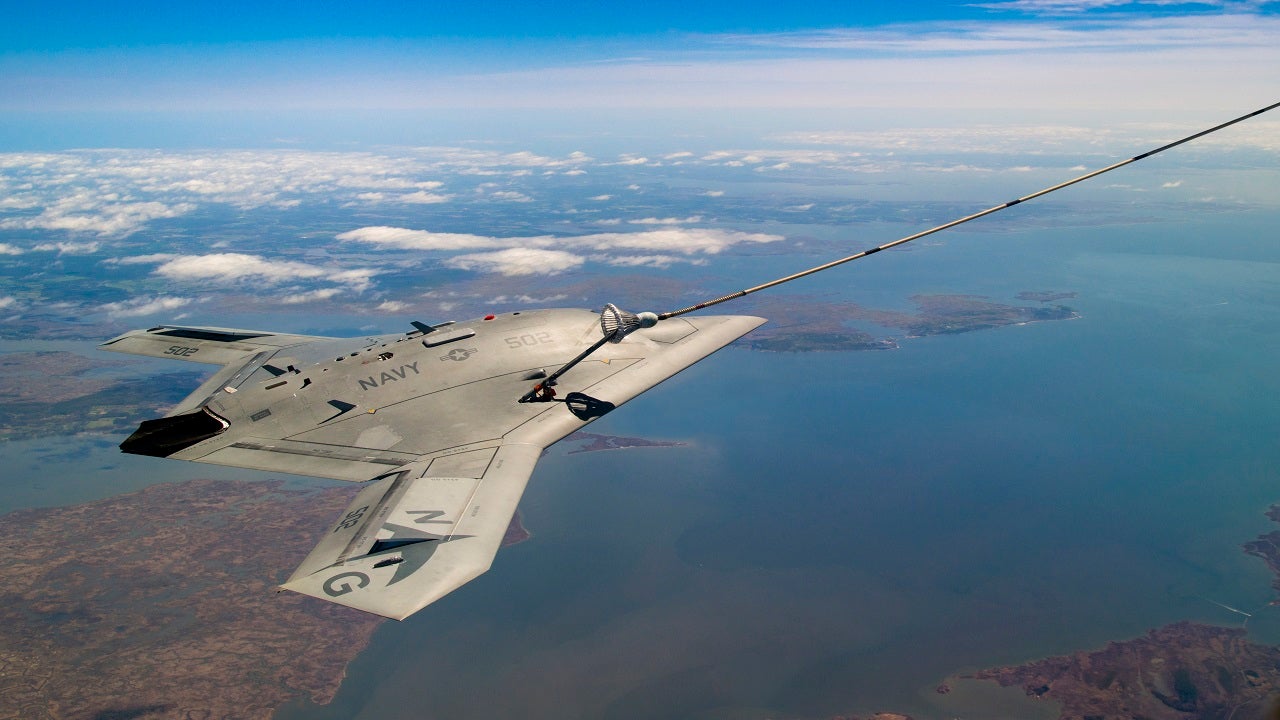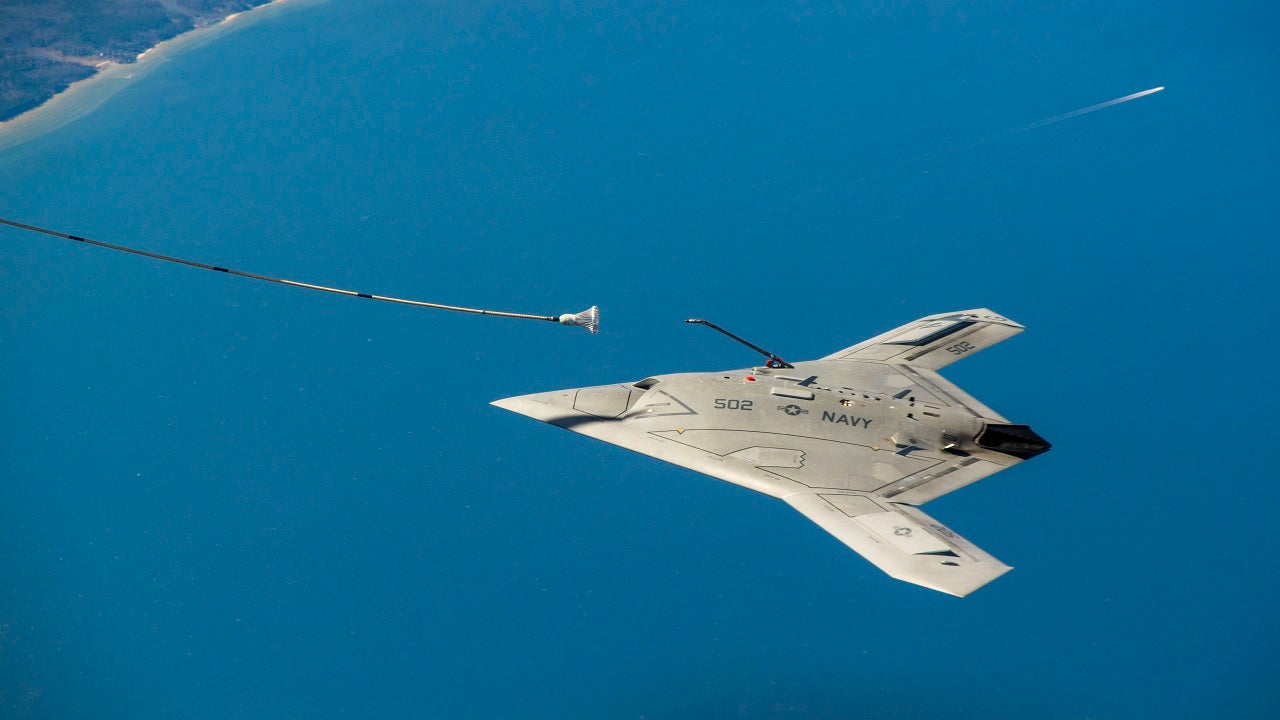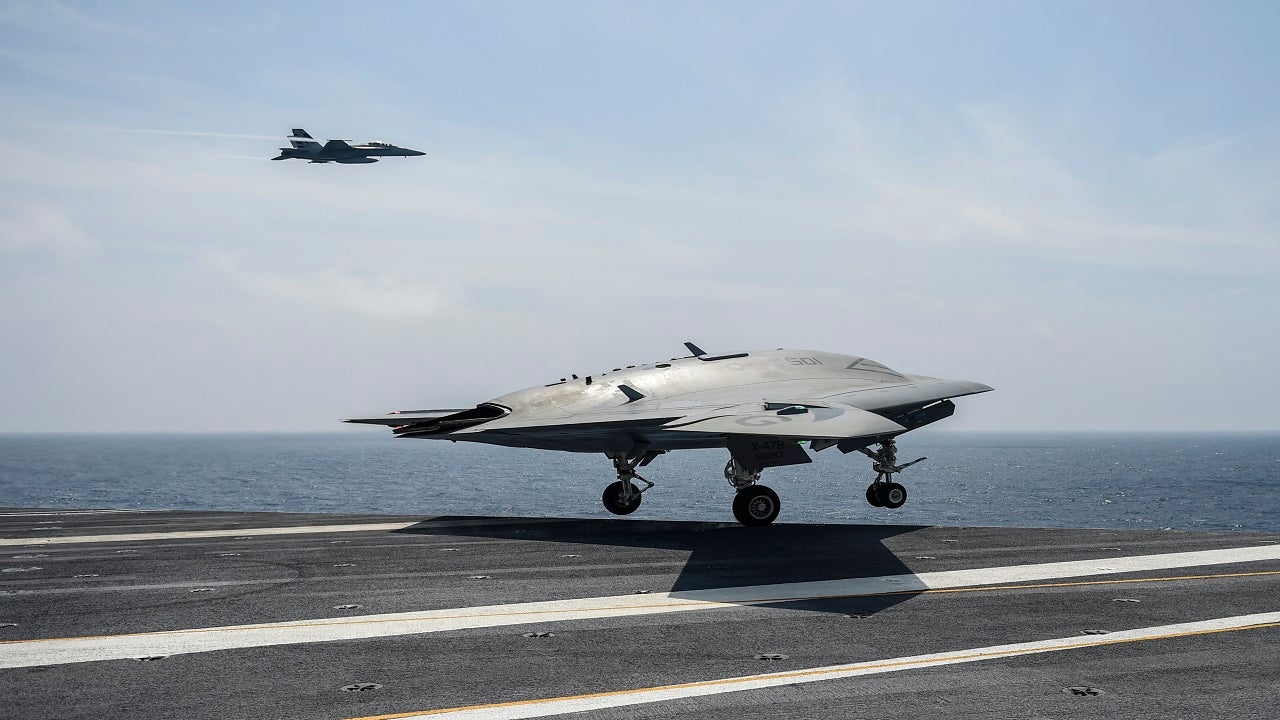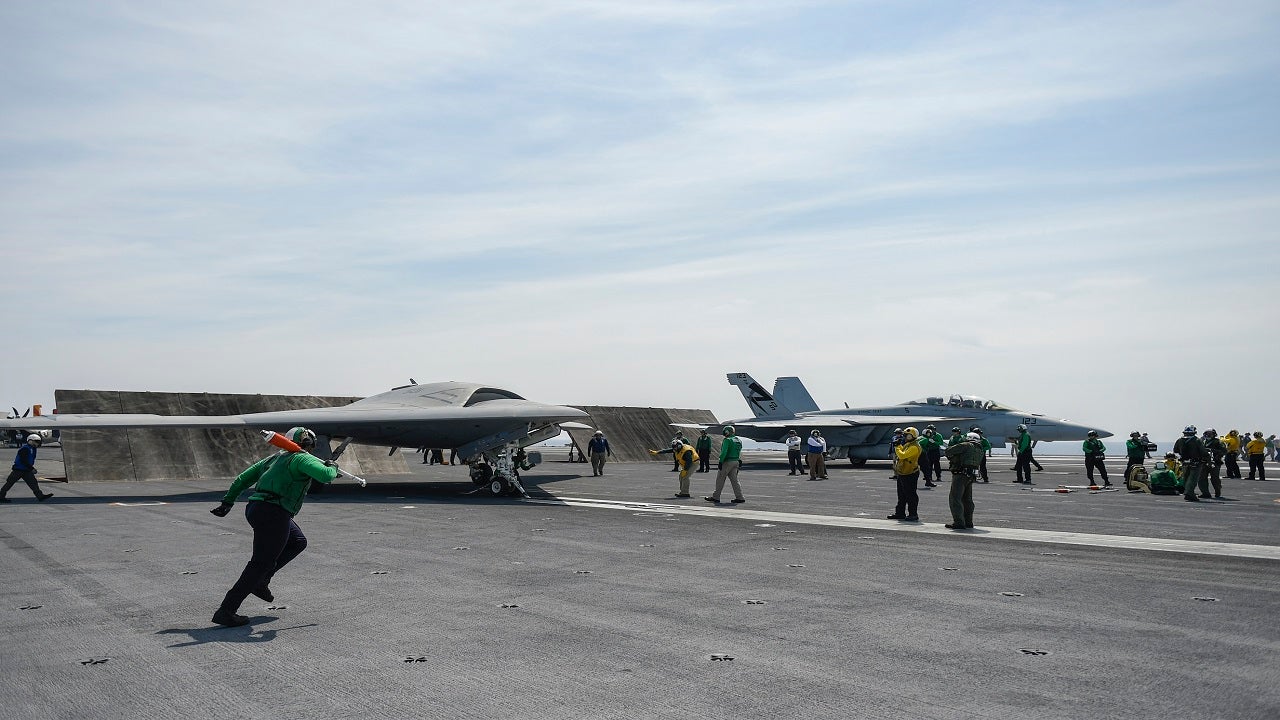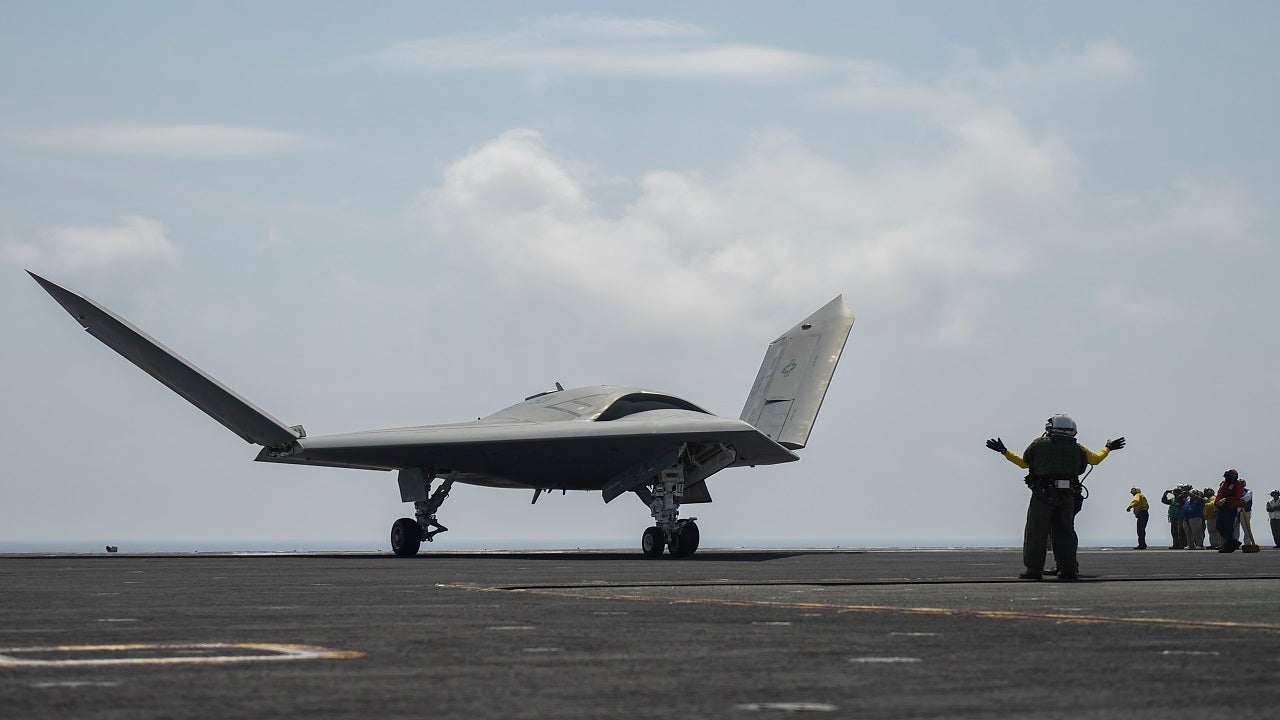The X-47B is an unmanned combat air system carrier (UCAS) offered by Northrop Grumman for the US Navy (USN). The strike fighter size unmanned aircraft successfully completed its first-ever autonomous aerial refuelling demonstration with an Omega Air KC-707 tanker in April 2015.
The unmanned aircraft was first developed as part of the X-47 programme. The airworthiness of the X-47B unmanned combat air system demonstrator was developed at an estimated cost of $813m.
The aircraft performed a successful initial test flight at Patuxent River, Maryland, US, in July 2012. The X-47B aircraft was integrated onto the US Navy’s carrier operations alongside manned aircraft in August 2014. The aircraft’s primary test programme was completed in May 2015.
Development history of the UCAS-D
The X-47B UCAS was developed by the US Navy as part of the unmanned combat air system carrier demonstration (UCAS-D) programme. The programme aims to develop and demonstrate, which fighter-sized tailless unmanned aircraft can be deployed from US Navy aircraft carriers.
The X-47B is a variant of Pegasus X-47A, which was developed as a joint USAF and USN programme, called J-UCAS, in 2001. The programme was funded by the DARPA with Northrop Grumman as the main contractor. In February 2006, however, the UCAS development programme was cancelled for separate UAV development programmes by both defence forces. Development of the X-47B, which started in June 2005, was temporarily halted, following the cancellation.
The US Naval Air Systems Command (NAVAIR) contracted Northrop Grumman for the construction and demonstration of two X-47B aircraft under the unmanned combat air system demonstrator (UCAS-D) programme in August 2007. The UCAS-D programme also aims to pave the way for developing potential future carrier-compatible, unmanned systems with little risk.
Companies, collaborating on the UCAS-D programme, include Rockwell Collins, Goodrich, Lockheed Martin, Parker Aerospace, Honeywell, GKN Aerospace, General Electric (GE), Wind River, Dell, Hamilton Sundstrand, Pratt & Whitney, Eaton, and Moog.
Design and features of the X-47B
The tailless unmanned aircraft is 38.2ft-long and has a wingspan of 62.1ft. The shape of the aircraft is designed for stealth or low observable relevant requirements. The weapons bay can carry 4,500lb of weapons.
Operations of the computer-controlled X-47B UCAS are smart and its flight control system is autonomous. The navigation of the UCAS is controlled by a hybrid global positioning system (GPS) vision-based system. The flight path is pre-programmed and its operations are monitored by a mission operator.
The UCAS is equipped with electro-optics (EO), infrared (IR), synthetic aperture radar (SAR), inverse SAR, ground moving target indicator (GMTI), electronic support measures (ESM), and maritime moving target indicator (MMTI) sensors.
The UCAS-D features both probe-and-drogues of the US Navy and boom-receptacle mechanisms of the USAF for autonomous air refuelling.
X-47B engine and performance details
The X-47B is powered by a Pratt & Whitney F100-PW-220U engine and exhaust system. The aircraft has a high subsonic speed of approximately 0.45M and a range of approximately 2,100nm. The UCAS can fly to a maximum altitude of 40,000ft.
Testing of the X-47B demonstration aircraft
Two autonomous jet-powered X-47B aircraft were built under the UCAS-D programme. The two demonstration vehicles have similar design and hardware features. The company is currently flight testing both of the X-47B aircraft. They can accommodate various kinds of sensors for reconnaissance, intelligence, and surveillance and have space for weapon systems. The payload is not installed on the demonstration units.
The first X-47B, including structural proof testing, was completed by October 2009. Air vehicle 1 (AV-1), the aircraft was transferred to Edwards Air Force Base (AFB) for flight testing in July 2010. The second aircraft, named AV-2, arrived at the base for testing in March 2011.
The first flight test of the UCAS-D was conducted in February 2011. The first catapult launch of X-47B was conducted at an onshore catapult facility at Naval Air Station Patuxent River in November 2012. The first at-sea test phase, involving a series of deck handling trials on board the USS Harry S Truman (CVN 75), was completed in December 2012.
The aircraft was also tested for launching, operating, and recovering capabilities in a navy carrier operable area of 50nm. The carrier launch, recovery, and deck handling tests were completed in December 2012.

